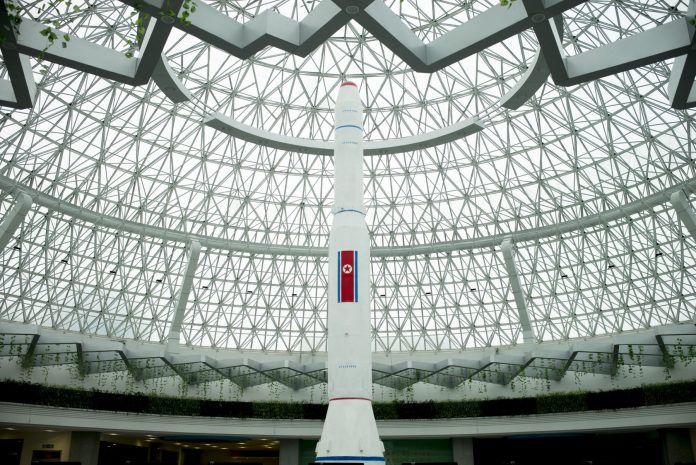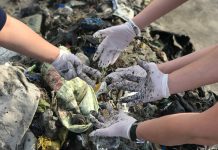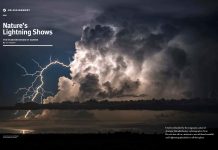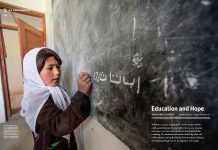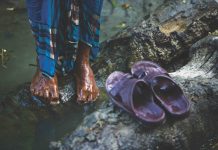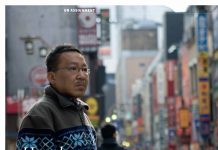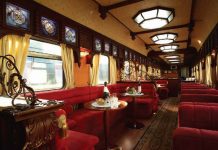The difference is perspective
Text & Photos Justin Ong
It was quite a strange position to be in, to have a streak of nervousness coursing through me when really I had no idea what I was nervous about. I found myself on a plane, and seated beside me was the Nobel Laureate in Medicine, Sir Richard J. Roberts – or Rich as I later know him – and we were headed into the dark zone.
Like most, I have had many unremarkable conversations on the phone but I do remember one that Uwe Morawetz and I had a couple of months ago. An old friend and the Chairman of the International Peace Foundation (IPF), Uwe requested that I join him on a trip to the Democratic People’s Republic of Korea (DPRK), otherwise known as North Korea. I responded as I usually do with old friends, and a few months later we were having dinner in Beijing while the team awaited for our visas to be processed.

As the plane descended onto North Korean soil, it swayed and buckled in the turbulence, adding to the tension. This was no ordinary place, though it was not like there was ordinary company with us on the plane. Our ChinaAir plan taxied in, and as Sir Richard and I peered suspiciously out of the cabin window to survey the newly-built Pyongyang Sunan International Airport, we noticed the three gates serving the airport.
“Why would they need three? One should suffice with this traffic,” said Sir Richard as he looked out onto the vacant runway and plane-less sky.
We were all well-prepared for the security checks. Just by looking at us and teams from the BBC and the National, anyone could infer that we were from the media, which naturally generated a bigger buzz than usual. Our luggage were heavily examined for more than an hour. I stood idly by whilst an airport official went through the entire contents of my mobile phone, a rather disconcerting welcome to the country much as it was to be expected. With my passport in the firm hands of the Korean National Peace Committee (KNPC), I boarded the bus that would take us to our accommodation for the week, a gated guest house situated in the heart of Pyongyang city. A few representatives of the KNPC came along with us in the media bus, a relatively well-kept 1967 Mercedes-Benz O309, and one man squeezed beside me. I reached for my camera somewhere along the way but was told through a whisper that no photos were to be taken, to which I oblige. A few moments later, I could keep it in no longer and asked why not, to which the reply was brief and ambiguous. One thing that was certain, they were always watching us. One seat away from the official beside me was the now-famous BBC reporter, Rupert Winfield – he was about to have a very interesting week, and a few extra days.

A “Hospital for Children”
As anticipated, the KNPC had arranged for us to visit certain areas in which they believed would be of interest to the Nobel Laureates I was in company with. The first of which, as the days progressed, would be the most controversial site during our “tour” of Pyongyang, leading to the detainment of Rupert and his team at the airport six days later.
The Okryu Children’s Hospital located in east Pyongyang is a six-storey high complex that was constructed with the intention to combine children’s healthcare with scientific research under one roof. Immediately after walking through the entrance, we were requested to put on white coats and slip-on socks over our footwear. The building constructed in June 2013 looked relatively new and was well-kept – the floors were sparkling and the rooms were well-lit, as one would expect of a hospital. Fifteen minutes into the tour however, I had the sneaking suspicion that this was all a ruse.
The medical equipment was said to be brand new; they are gifts from Kim Jong-un, the Chairman of the Workers’ Party of Korea and the country’s supreme leader. The staff at the hospital claimed that these medical equipment are used in daily procedures but they oddly show no sign of use or wear and tear.
There were also patients in the hospital, but something was not quite right with the way they seemed to hide from us. It was as though they were always waiting, not for treatment, but for nothing in particular.
An indoor playground for the young patients was put together on the ground floor, and as we walked by it was filled with children playing. When we proceeded upstairs, it became completely deserted. There were also patients in classrooms studying, all of whom were seated almost too obediently, and a small gym where these children were again running about as if for us to see. Everyone of these patients looked to me completely healthy. I couldn’t tell if this was all what it is supposed to be.
I had my suspicions but kept an open mind throughout the tour. I wanted to see the truth, or get as close to it as possible. No one seemed bothered by what they saw at the hospital and saw no reason to question the legitimacy of the practice there other than the people from the BBC. I felt however that there may have been some other truth behind what we saw, behind the disarmingly perfect façade.
Mangyongdae Children’s Palace
I must have missed the discussion where they explained what this place was and was completely confused the moment I stepped into the Mangyongdae Children’s Palace. Was this a school for gifted children, a place where the elites send their young ones to or the most elaborate and comprehensive tuition centre in the world? The building was massive, and it housed 120 rooms, dance and performance studios, a swimming pool, a gymnasium and a theatre that can accommodate some 2,000 people and even, for whatever reason, a replica of a rocket.

Performances are held in these classrooms and the students present routines they are currently working on. Visitors can observe the students practising traditional dances and musical instruments or attend a workshop, even sitting in on a Science class if so desired. Some of these performances have a strict schedule to follow.
It is unclear if the participation at this after-school centre is mandatory but the purpose and core concept of the Children’s Palace is not that questionable as there are similar facilities in China where elite families send their kids. What made observing this destination rather uncomfortable was that it seemed to be a tourist attraction of sorts, like Disneyland. Tour buses clogged up the usually traffic-less roads of Pyongyang and the hallways were filled with wide-eyed visitors peeking into classrooms and clapping along to the musical performances.
I approached Mr Kim, one of our KNPC officials, and asked if this was a usual tourist stop and if it is a daily occurence. He contemplated the question silently before eventually responding that word had gotten out – even without the Internet – that the Nobel Laureates were going to visit, so the various tour groups made it a point to come by at the same time. Tours at the Children’s Palace usually happen only once or twice a week.
We were all ushered into the preposterously large theatre to enjoy a performance put together by the students. The production value and quality of the show was astonishing; the stage had two treadmills moving performers on and off stage efficiently while the lighting and props were elaborate. There was not a single hitch in the show. The students wrapped up the show with a song performance and videos displaying the country’s military prowess – plane missiles hitting targets, rocket launch footage and the works. After the grand performance, I managed to ask an American tourist heading out if this venue was on his pre-planned tour route, confirming that I was lied to.

“You cannot turn penicillin into a nuclear bomb”
The dialogues began and over the next few days, the three Nobel Prize winners travelled across Pyongyang to present keynote speeches on their research and conduct rather intimate dialogues with the purest of intentions and goodwill. These were the highlights of this trip.
The agenda of the dialogue with the participating university’s students and lecturers was simple. We were concerned about the repercussions of the strict UN sanctions and how they were affecting the daily lives of the average citizen, and it was clear to us that a common issue faced by the students was the restricted access to the Internet. As Sir Richard sharply put during a conversation with some of the lecturers: “One cannot be on the cutting edge of science if you are unaware of what everyone else is doing.”
The dialogues carried on through the next four days and our relationships with the people from the KNPC and the universities started to evolve – trust began to grow. Just like how we were nervous and apprehensive about entering a land so different from our capitalist homelands, the locals were nervous as well, unsure of our intentions, afraid to be ridiculed by the outside world as no country in the world functions the way they do. It is evident the DPRK is very much alone in their difference.
Do we impose our ideologies and capitalist culture upon the North Koreans simply because they are different from us? Exactly like what the colonial masters did in much of East Asia and Southeast Asia, this is an imposition fuelled by difference. It is difficult to understand the dynamics and mentality of a culture so closed off to the world, but it is easy to see why they would be afraid and paranoid – which takes me back to why we visited Pyongyang in the first place, and how the Children’s Hospital just seemed arranged a little too neatly.

Wayang is the Javanese term for an orchestrated performance and is a Singaporean slang word often used by soldiers in military service. It describes the change in behaviour when a superior is present. The intention is to convince on-lookers that you are carrying out the job well. This wayang could explain the strangeness that many may experience when they visit the DPRK – a country under heavy-fisted scrutiny and constantly trying to over-compensate. There are undoubtedly controversial issues with the way the country governs her people and values human life, but with time there could be ways to resolving these issues.
In a press conference a day after departing from the DPRK in Beijing, Israeli Nobel Prize winner Aaron Ciechanover pleaded for the relaxation of the sanctions held over their healthcare system. He said, “You cannot turn penicillin into a nuclear bomb.”
North Korea may be in a time capsule of a community, a society where people exist for others and their leader. Like ancient tribes or past great empires, we may all live for ourselves here in the “free world”, but how many of us actually feel free?
For more stories and photos, check out Asian Geographic Issue 119.


